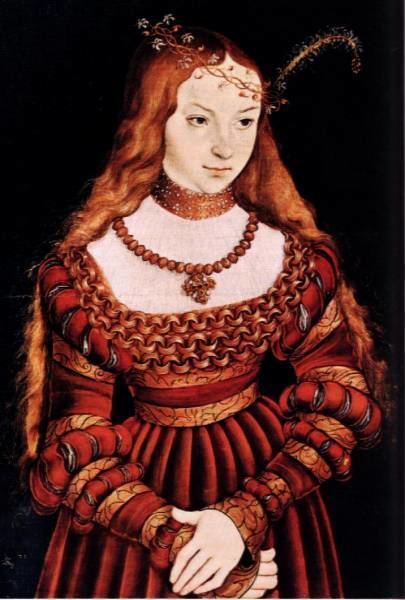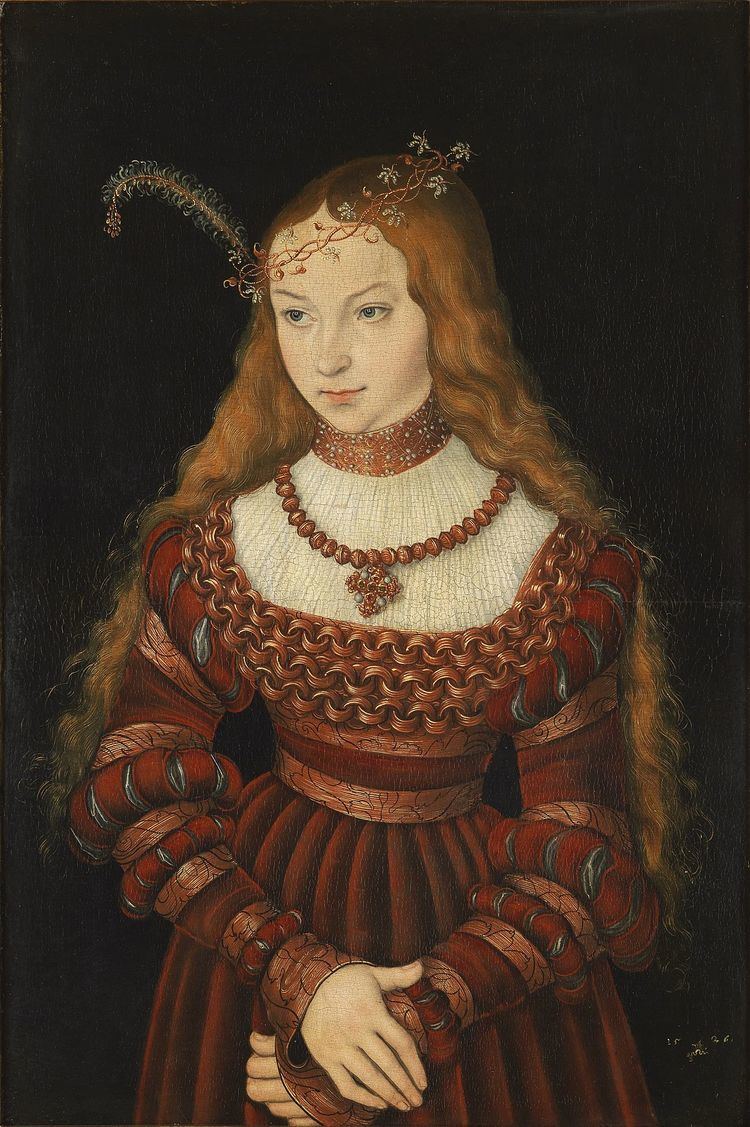Mother Maria of Julich-Berg Name Sibylle Cleves | Siblings Anne of Cleves | |
 | ||
Born 17 January 1512Dusseldorf ( 1512-01-17 ) Issue Johann Friedrich II, Duke of SaxonyJohann Wilhelm, Duke of Saxe-WeimarPrince John Ernest of SaxonyJohn Frederick III the Younger, Duke of Saxony Died February 21, 1554, Weimar, Germany Children Johann Wilhelm, Duke of Saxe-Weimar, John Frederick II, Duke of Saxony, John Frederick III, Duke of Saxony Parents John III, Duke of Cleves, Maria of Julich-Berg Similar People | ||
Sibylle of Cleves
Sibylle of Cleves (German: Sibylle von Jülich-Kleve-Berg) (17 January 1512 – 21 February 1554) was Electress consort of Saxony.
Contents

Born in Düsseldorf, she was the eldest daughter of Johann III of the House of La Marck, Duke of Jülich jure uxoris, Cleves, Berg jure uxoris, Count of Mark, also known as de la Marck and Ravensberg jure uxoris (often referred to as Duke of Cleves) who died in 1538, and his wife Maria, Duchess of Julich-Berg (1491–1543). Her younger siblings were two sisters, Anna (later Queen of England) and Amalia, and a brother, Wilhelm, who became in Duke of Jülich-Cleves-Berg, bearing the promising epithet "The Rich".
Life
In September 1526, Sibylle was betrothed to Electoral Prince Johann Friedrich of Saxony in the Schloss Burg an der Wupper. After lengthy negotiations about the dowry, the lavish wedding ceremony, preceded by an elaborate procession, took place in Torgau on 9 February 1527. They had four sons:
After the death of his father in 1532, Johann Friedrich became Elector of Saxony and Sibylle the Electress consort.
The correspondence between Sibylle and her husband during his captivity as consequence of the Schmalkaldic War, showed a devoted and intimate couple. In the meanwhile, during the siege of Wittenberg, the Electress protected the city in her husband's absence. To save his wife and sons, and to prevent Wittenberg from being destroyed, Johann Friedrich conceded the Capitulation of Wittenberg, and resigned the government of his country in favour of Maurice of Saxony.
In 1552, after five years of captivity, the deposed Elector was finally reunited with his family. However, the reunion was short-lived: in 1554 both Sibylle and Johann Friedrich I died within a month of each other. They were buried in the City Church of Weimar.
Like her husband, Sibylle was a staunch supporter of the Reformation. The Thuringian reformer Justus Menius dedicated to her the mirrors for princes writing Oeconomia Christiana.
